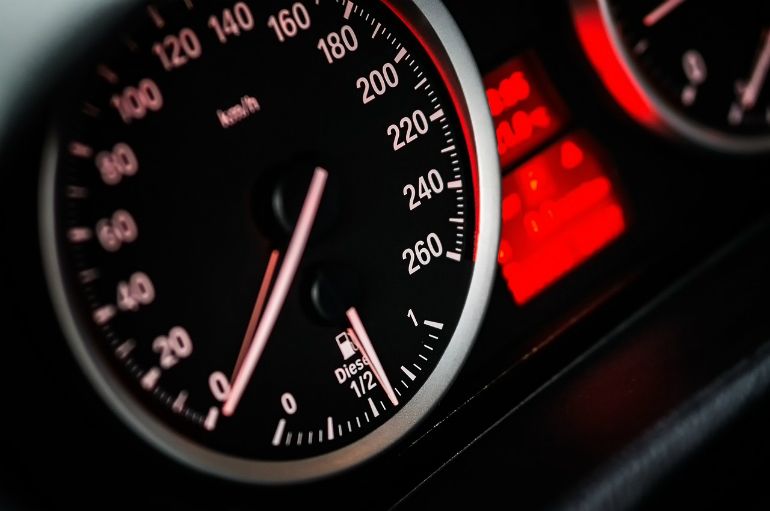Share:
Take it offline!
This Education in Motion resource is also available as a printable PDF.
Download PDF
Driving is an important part of life, enabling people to access locations that may be difficult to reach using other modes of transport. For people with disabilities, car travel is often particularly important. Driving enables people with disabilities to maintain their independence. Drivers are able to control and manipulate the accessibility of their own cars, and this is often preferable to public transport, which is often plagued by inaccessible features and non-inclusive facilities that are beyond individual control.
Medical Fitness to Drive and Getting Your Licence
While some disabilities do inhibit a person’s ability to safely operate a motor vehicle, many people with disabilities are able to obtain a driver’s licence. The process of determining driving abilities varies in relation to individual needs and challenges.
People with minor disabilities that will not impact their ability to drive safely are usually able to sit a standard driving test, and their disabilities do not need to be added to their license. People with more severe disabilities need to sit a disability driving test. Often, these people will rely on driving aids. These and the disabilities that make them necessary will need to be included on their license.

New drivers applying for their first licence must declare all aspects of their disabilities so that appropriate decisions and accommodations can be made. These people need to provide medical documentation relating to their fitness to drive, and treating professionals may be asked to recommend licence restrictions or vehicle modifications.
In most Australian states, current licence holders who declare a newly acquired disability for the first time are required to provide a medical report from their doctor indicating that they remain fit to drive safely. Depending on the nature of the disability, a disability driving test may be deemed necessary, and new conditions may or may not be applied to the person’s licence.
For the safety of all road users, it’s important that all people with disabilities declare their disabilities to their state or territory’s transport department. Changes in disability – a new disability, temporary or permanent, for example – should also be communicated to the state government transport department.
Adaptive Options and Vehicle Modifications
People with disabilities often need vehicle modifications and adaptive equipment to make driving safe and comfortable. It’s a good idea to work with an occupational therapist, who can suggest adaptive options and help drivers to obtain the necessary equipment.

Accessible Vehicle
It’s important that vehicles are accessible for those who need to use them, as either passengers or drivers. Choosing a vehicle with wide doors, safe wheelchair space, ramps, or an access lift may be necessary.
Steering Aids
Some people who live with mobility limitations may find steering difficult when using a mainstream steering wheel. There are a number of adaptive steering options available. Cars can be fitted with steering balls, which enable drivers to control the car using just one hand. Alternatively, drivers may choose to use steering gloves or steering tetra grips, which are designed for people with limited capacity for hand grip. In some cases, steering of the existing steering wheel can be lightened, or steering wheels can be reduced in size or made removable.
Left-foot Accelerators
Left-foot accelerators are a great choice for people who cannot use their right foot to accelerate a vehicle. Left-foot adaptive accelerators can be fitted into cars, enabling drivers to manipulate speed with their left foot. Often, these accelerators can be made to be removable, so that right-foot acceleration can be used if someone else is driving the car.
Customer-specific Hand Controls
Customer-specific hand controls can offer a solution to those who find using standard vehicle controls challenging. Hand controls can be made to allow drivers to control acceleration and braking without using their feet, and this can be a fantastic adaptive option for drivers with limited or no use of their lower body.

Extended or Additional Mirrors
Drivers with restricted mobility can sometimes find it difficult to see everything they need to. Extended or additional mirrors can be added to cars to help improve a driver’s field of vision, enabling them to safely reverse, turn, and drive with fewer dangerous blind spots.
Seating Adjustments
Vehicle seat conversions can help to make cars much more accessible to people with disabilities. Swivel seats can assist with transfers, lifting out of the vehicle so that drivers can easily get in and out of the car. Some seat conversion options include backrest adjustability and programmed movement paths. These adjustments are helpful in making car travel more comfortable for drivers with disabilities.
Parking Permits
Drivers with disabilities need to be aware of the rules and regulations relating to disability parking spaces. The Australian Disability Parking Scheme includes a nationally recognised parking permit, which measures disability against consistent criteria to determine the need for parking accommodations. People who would like to apply for a disability parking permit should contact their state or territory’s department of transport.
It’s important to work with industry professionals when it comes to choosing and fitting vehicle adaptions. This way, safety can be ensured for all road users. While there are many vehicle adaptation options, there are restrictions on what changes can legally be made to vehicles, so drivers should check legalities.
Occupational therapists are highly valuable when it comes to determining which adaptive technologies may help a driver with a disability. There are many Australian occupational therapists who provide this help. When it’s time to add adaptive equipment to a vehicle, companies such as Mobility Enginerring can help to provide safe, legal adjustments that make driving with disability possible.